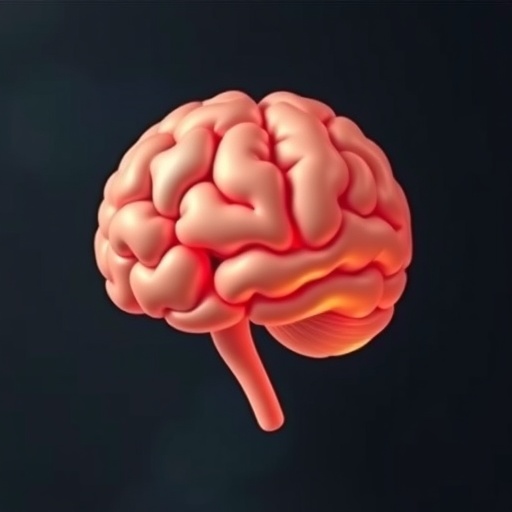Recent developments in neuroscience and artificial intelligence have revealed a groundbreaking intersection that fuels our understanding of the human brain’s response to language processing. In an illuminating study, researchers have demonstrated that large language models (LLMs) can effectively predict neural activity captured via electrocorticography (ECoG) while individuals engage in natural language tasks. This melding of machine learning and neuroimaging showcases a dynamic approach to comprehending how the brain processes spoken language, which could revolutionize both fields.
The research hinges on a critical examination of neural signals from eight participants who listened to an extensive 30-minute podcast. This endeavor is particularly significant as it extends beyond prior studies that tended to evaluate encoding models on a more granular level—focusing on individual electrodes or participants. By analyzing data from multiple subjects, the researchers set the stage for greater generalization in findings, identifying patterns that exist across brains rather than in isolation.
A major attribute of this study is the application of a shared response model, an innovative framework that allows researchers to estimate a common informational space that transcends individual differences. This methodological shift not only provides a more robust analysis but also enhances the performance of large language models in encoding neural responses. The ability to create a shared space can be seen as a pivotal factor in aligning brain activity patterns with linguistic models, thus providing a clearer understanding of the neural underpinnings of language comprehension.
The results are striking. The researchers reported a notable enhancement in the encoding accuracy of the models, yielding an impressive average improvement rate of 37%. This statistical leap—from an initial correlation coefficient of r = 0.188 to r = 0.257—underscores the robust potential of the shared modeling approach. Notably, the most pronounced gains were observed in brain regions that are inherently linked with language processing, specifically in the superior temporal gyrus and inferior frontal gyrus. These areas of the brain play critical roles in auditory processing and language production, respectively, thus emphasizing the study’s implications for understanding language at a neurobiological level.
Moreover, this advancement in encoding accuracy signifies more than just a technical achievement. It opens avenues for better interpretations of how linguistic information traverses the brain, establishing a valuable dialogue between cognitive neuroscience and artificial intelligence. By projecting the modeled responses back into participant-specific electrode spaces, researchers were able to denoise individual brain responses, enhancing the clarity of neural representations tied to language processing. Hence, this not only sheds light on neural mechanisms but also illustrates a practical application in refining neural decoding techniques.
The fusion of neuroscience and large language models exemplifies a new epoch in cognitive science research. As LLMs grow more sophisticated, their capacity to predict neural activity based on linguistic input seems increasingly attainable. This convergence brings forth a promising horizon where advances in AI can inform our grasp of cognitive functions while providing a rich tapestry for future research endeavors.
As the implications of the shared space methodology unfold, it begs the question of how similar approaches can be scaled up to larger populations and varied linguistic contexts. This research lays the groundwork for a paradigm shift that encourages the exploration of collective brain patterns across diverse demographics. Future studies are likely to expand on these findings by incorporating a wider array of podcast topics or employing multilingual settings, thereby enabling a more comprehensive understanding of how language is processed across different cultures and languages.
In addition to its scientific significance, this research prompts discussions about the ethical considerations intertwined with harnessing AI technologies in neuroscience. As the boundary blurs between human cognition and machine learning, it is paramount to address how these insights could be applied, particularly in clinical settings. For instance, learning more about neural coding and language comprehension could have substantial implications for developing tools that aid those with linguistic impairments or neurodevelopmental disorders.
Ultimately, the trajectory of this research indicates a revolutionary path forward, one characterized by collaborative efforts between AI specialists, neuroscientists, and linguists. The integration of their expertise is essential for further dissecting the complexity of language processing within the brain. By exploring the potential of shared response models and robust encoding frameworks, researchers can unlock an unprecedented understanding of language and cognition.
This study marks an essential contribution to the growing nexus of neuroscience and artificial intelligence, providing a compelling premise for future investigations. As we navigate the depths of human cognition, merging insights from these domains will illuminate the intricate workings of the brain and possibly share knowledge that can be translated into practical applications in technology and medicine.
Going forward, the evolution of large language models promises not only advancements in AI capabilities but also a deeper appreciation for the enigmas of human cognition. With ongoing research and collaboration, significant breakthroughs may emerge, continuing to unravel the complex tapestry of language processing within the neural architecture.
The implications for society, technology, and our understanding of the mind are profound, exemplifying how intertwined disciplines can converge to offer insights that were once thought unattainable. This intersection of AI and neuroscience might indeed become a cornerstone in the ongoing quest to comprehend the intricacies of human thought and communication.
Subject of Research: Neural activity prediction during natural language processing
Article Title: Aligning brains into a shared space improves their alignment with large language models
Article References:
Bhattacharjee, A., Zada, Z., Wang, H. et al. Aligning brains into a shared space improves their alignment with large language models.
Nat Comput Sci (2025). https://doi.org/10.1038/s43588-025-00900-y
Image Credits: AI Generated
DOI: https://doi.org/10.1038/s43588-025-00900-y
Keywords: Neural encoding, large language models, electrocorticography, language processing, cognitive neuroscience, shared response model.
Tags: brain response patternselectrocorticography ECoGinterdisciplinary studies in AI and neurosciencelanguage model performance enhancementlanguage processing neurosciencelarge language modelsmachine learning neuroimagingmulti-subject data analysisnatural language tasks researchneural activity predictionshared brainspaceshared response model framework





